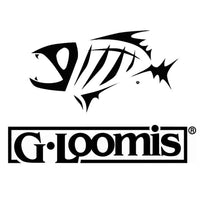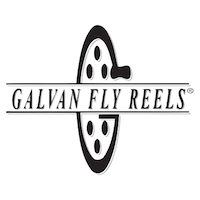Saltwater Fly Fishing in Central Florida
Saltwater fly fishing opportunities vary from tailing redfish on the flats to snook in the mangroves to tarpon off the beach in the summer. Orlando is only about an hour from the east coast and an hour and a half from the west coast. Relatively nearby destinations include the Mosquito Lagoon, the Indian River, Sebastian Inlet and the Sebastian River and Tampa Bay. Depending on the time of year and where you go, you may have the opportunity to catch redfish, speckled trout, tarpon, snook, black drum and others.
If your idea of a successful trip involves catching a fish, we strongly suggest you fish with a friend who knows the water well, or you hire a local guide. The value of fishing with someone who knows the water is hard to overstate. A decent fly angler can catch plenty of fish on their own. It just may take some time before you catch that first fish, and more time still before it happens regularly.
Where to Start?
 An ideal way to learn a saltwater fishery is start with a small area, cover it well, and branch out a little further each trip. It will take some time to learn the patterns in any one area but before long you’ll know when to go and what to do and will be catching more fish. It is possible to catch fish your first or second time out but, if you are fishing on your own, it is much more likely that you’ll be putting in some time before you are regularly successful.
An ideal way to learn a saltwater fishery is start with a small area, cover it well, and branch out a little further each trip. It will take some time to learn the patterns in any one area but before long you’ll know when to go and what to do and will be catching more fish. It is possible to catch fish your first or second time out but, if you are fishing on your own, it is much more likely that you’ll be putting in some time before you are regularly successful.
There are a few wade and shore fishing possibilities but almost all of the saltwater fisheries in the area require a boat. This doesn’t necessarily mean a flats skiff. A canoe, kayak or stand up paddleboard can, at times, be even more effective than a technical poling skiff.
Because there are so many options and because they change so much with the tide, the weather and the seasons, we only offer very general information here. If you want some suggestions on where to start, stop by or get in touch with us. We can recommend places to go, gear you’ll need and fly patterns to bring, all depending on current conditions and your interests.
A DIY Trip on the Mosquito Lagoon or Indian River
 If you are a reasonably proficient angler, get your hands on boat of some sort and put in at one of the many launches on the Mosquito Lagoon or north Indian River. We sell waterproof Top Spot maps, which show boat launches, water depth and suggested areas to fish. You can find location on the launches available on the Merritt Island Refuge website. Click on the link for “Free Refuge Fishing Permit,” which will bring up a pdf of the required permit, along with a map of the refuge.
If you are a reasonably proficient angler, get your hands on boat of some sort and put in at one of the many launches on the Mosquito Lagoon or north Indian River. We sell waterproof Top Spot maps, which show boat launches, water depth and suggested areas to fish. You can find location on the launches available on the Merritt Island Refuge website. Click on the link for “Free Refuge Fishing Permit,” which will bring up a pdf of the required permit, along with a map of the refuge.
A simple option would be to rent a kayak from JB’s Fish Camp on New Smyrna Beach. They are located on the east side of the Mosquito Lagoon, right in the middle of some excellent fishing areas. Stop back in when you are done for a beer and bite to eat.
Wherever you decide to go, bring along a 7, 8 or 9wt rod rigged with a 12lb saltwater leader. The most common target is redfish, but bring some 30lb fluorocarbon, or a separate leader pre-rigged with 25lb to 40lb bite tippet, in case you run into snook.
You can fish from your boat or just use it to get to water you can wade fish. If you plan to wade, bring a stake-out pole or an anchor to keep the boat from floating away. Test the bottom before getting out. The bottom over much of the Lagoon is very soft. The outside edges of flats and shorelines that get regular current will usually be easier to wade.
Explore shorelines and coves, as well as flats in open water. Look for signs of fish, including topwater strikes, pushes (fish pushing a head wake) and tailing redfish (feeding redfish sometimes stick their tails out of the water when nose-down on the bottom).
 Much of the action you see will probably be mullet. Mullet schools look a lot like redfish schools – just a lot more nervous. If the fish you are watching are moving erratically, changing directions for no apparent reason, they are most likely mullet. A redfish, either alone or in a school, will typically continue heading the same direction for a considerable distance.
Much of the action you see will probably be mullet. Mullet schools look a lot like redfish schools – just a lot more nervous. If the fish you are watching are moving erratically, changing directions for no apparent reason, they are most likely mullet. A redfish, either alone or in a school, will typically continue heading the same direction for a considerable distance.
Tailing catfish can look a lot like redfish. Catfish often tail in shallow backwater areas. If the tail is relatively small, black and forked, it’s not a redfish.
If you get out early in the morning, start with a topwater gurgler or a pinfish or mullet pattern. Blind cast around mullet schools, along edges, and anywhere else that looks like it should hold fish. You may catch redfish, seatrout or ladyfish. In the summer, in some areas, you may also hook a small tarpon.
Once the sun is up higher, you have a better chance of finding individual redfish. Start with either a Chico’s River Shrimp or a Bendback. Both can be fished slowly, for tailing fish, or more quickly, as a searching pattern or for fish on the move. If you get refusals on the other patterns, try a Fleeing Crab. Crabs are one of the most effective patterns but have to be fished slowly and your casting must be right on.
If you find snook, put on your 30lb leader and tie on an EP Mullet or Pinfish, a red and white Seaducer, or a chartreuse/white or tan/white #2 Clouser Minnow.
If the weather is overcast and the fish are not moving around or tailing, then sight fishing will be difficult. Tie on a Clouser Minnow or other weighted fly and cast at potholes (sandy depressions in the middle of grass flats) and off the edge of flats. You are likely to catch both redfish and speckled trout.
You should find some fish and are guaranteed a nice paddle with plenty of wildlife. Bring along a map or a smartphone in a waterproof bag. Everything looks the same from the water and picking your way back without a map can be difficult.
Fly and Leader Recommendation for the Mosquito Lagoon and Indian River:- Rio Bonefish Leader – 12lb
- Rio Light Saltwater Shock Leader – 25lb
- Rio Bonefish Tippet - 12lb
- Rio Fluoroflex Fluorocarbon Tippet - 30 lb
- Boehm’s Gurgler
- Chico’s River Shrimp
- Bendback - Prince of Tides, brown/tan and black/purple
- Seaducer - #2, red/white, black, orange/tan
- Supreme Hair Shrimp, #2, tan
- EP Pinfish, #2/0
- EP Finger Mullet - #1/0, #2/0
- EP Everglades Special, #1/0, #2/0
- Fleeing Crab - #2, merkin
- Clouser Minnow - #2, chartreuse/white, tan/white














